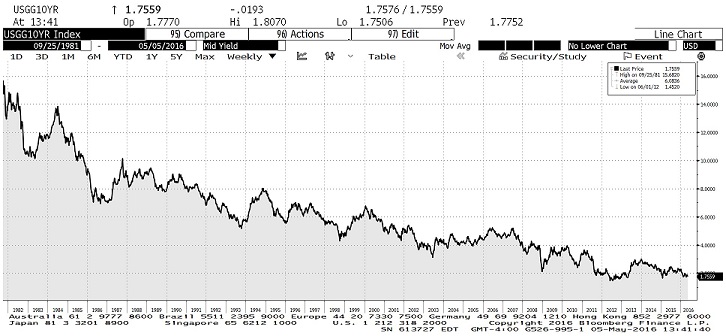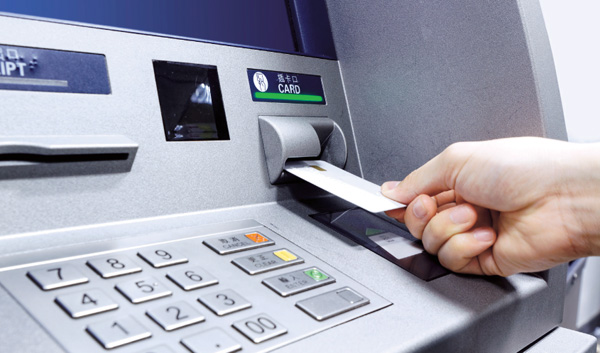Ever since the recovery from the Great Recession began in approximately mid-2009, many individuals have been forecasting that interest rates will soon be on the rise. Over recent years, we have seen rates increase somewhat, only to fall back to unprecedented levels. But if we take a longer view of interest rates, we might re-examine our outlook.
For example, let's take a look at 10-year Treasury yields. The high point for this Treasury was 15.84% on Sept. 30, 1981. As recently as February 2016, yields dipped to approximately 1.65%. But what has been the general course of yields during the almost 35 years between those two points? Perhaps a story is being told during that time that might be considered.

We see that while over time rates go up and down, there does appear to be an overall trend during the last 35 years. Given that, if you sat on the sidelines with investable funds in cash for an extended period betting that rates would rise over the past few years, there was a "cost of waiting" in lost investment returns.
Recommended For You
Along with that, every month Bloomberg provides an economists' survey of where they foresee key financial indicators over the next two years or so. If we look at the Bloomberg Survey of 57 economists' forecasts for the 10-year Treasury from April 9, 2015, we see their forecasted yields for the second quarter of 2016, ranged from a high of 4.40% to a low of 1.65%, with an average of 2.89%.
On May 5, 2016, the actual yield for the 10-year Treasury was 1.76%!
We often hear prognosticators making their predictions on where interest rates are headed. But based on what? A gut feeling? It reminds me of the characters in the Samuel Beckett play "Waiting for Godot," when they are repeatedly told, "Godot will not be arriving tonight, but surely tomorrow."
Yet, there is more to this story.
You would be hard pressed not to find an article today where the author or other experts believe that rates will soon rise. But then I was thinking that if you were in the time period leading up to September 1981, the question would have been, "When will rates start to decline?" Given that, it then begs the question of "What are normal interest rates?"
Many individuals believe that these are unusual times and current rates continue to be an aberration. But are they?
Will further technological breakthroughs displace additional workers, or will new inventions create more jobs than we can imagine? Will political turmoil continue or will we achieve peace in our time? All of this will impact future rates.
I have been a financial adviser since the mid-1980s. I'm pretty sure my answer to "What are normal interest rates?" at age 30 would have been different than my response at age 40, and different than it would be now. But experience has taught me that economists, with their thousands of data points and an overwhelming amount of information, still cannot accurately forecast interest rate direction on a regular basis.
So the answer to these questions on rate movements is that no one really knows where rates are headed. We can only use the information at hand and make prudent decisions based on what is known. Otherwise, it is just like gambling.
Gary Tantleff is managing director, wealth management for the Credit Union Advisory Group at UBS. He can be reached at 877-269-1776 or [email protected].
© 2025 ALM Global, LLC, All Rights Reserved. Request academic re-use from www.copyright.com. All other uses, submit a request to [email protected]. For more information visit Asset & Logo Licensing.







